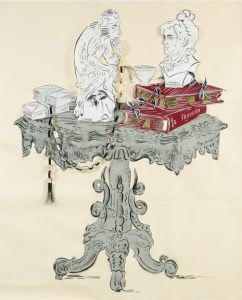I'm constantly encouraging my students to seek out new experiences, test their mettle and stretch. I don't often have an opportunity to practice what I preach -- things at my end have settled into a pretty predictable groove -- but last week, I was treated to a hefty dose of my own medicine. I found myself in a brand new setting -- a recording studio the size of a shoebox -- and staring down a set of equally new interpretive challenges. I was to pretend that I was standing in front of a series of museum objects and to chat away freely, as if in the company of good friends.

I have no trouble filling the air with the sound of my voice nor am I averse to my imagination going full tilt. All the same, in the course of the taping, which the Jewish Museum of New York had commissioned in order to add another voice, another layer of interpretation, to its exhibition, "Scenes from the Collection," I felt a little like Jimmy Stewart and his imaginary rabbit, Harvey.
It wasn't that I was pulling rabbits out of a hat, conjuring up things that didn't exist. The objects I had elected to talk about -- among them, a fanciful wooden pastry stamp, a lead Hanukkah lamp in the shape of miniature chairs, a chubby aluminum charity box with an ill-fitting lid -- were real enough: each one came with a history, a back story.
That was the easy part. The hard part was to hold forth convincingly on their appeal when all I had at my disposal -- and the listener's patience -- was a minute or two. Accustomed in the classroom and in print to the luxury of elaboration, I had now to work within the constraints of concision: to speak fast, but not too fast; to sound conversational and animated rather than didactic and flat; to induce in my audience a sense of connection and, above all, to do right by the objects.
As the taping wore on, I got better at it, more confident in my pacing and in my content, too, but before I knew it, my time in the studio was up. Already?! I hope I'll have another opportunity sometime soon to reprise my maiden sonic adventure.
In the meantime, here's to new challenges, be they acoustic, visual or somewhere in between.



